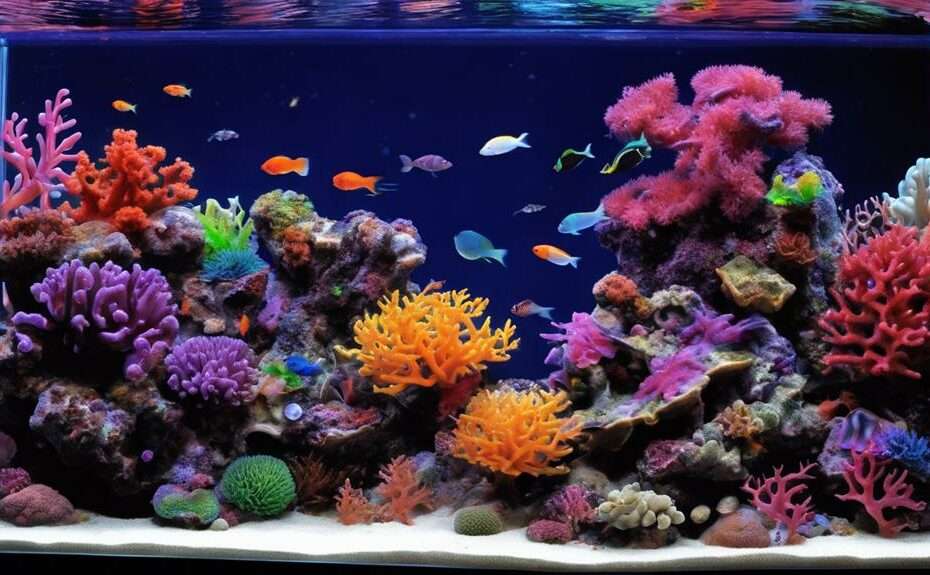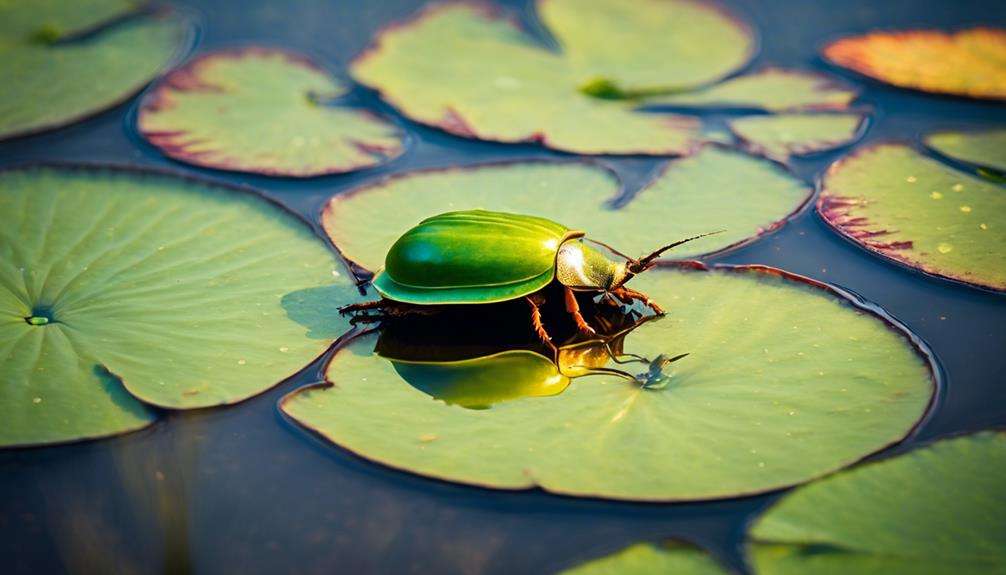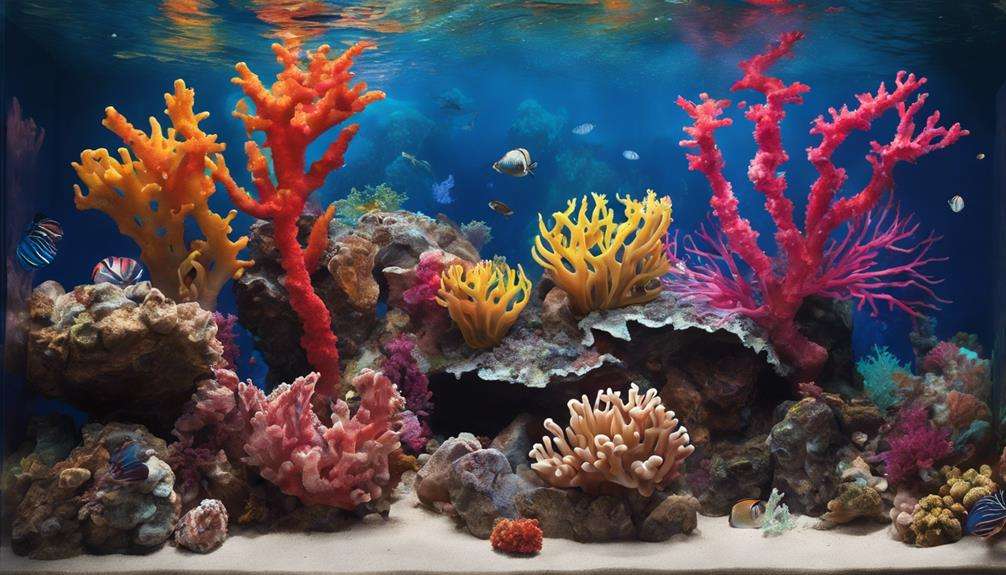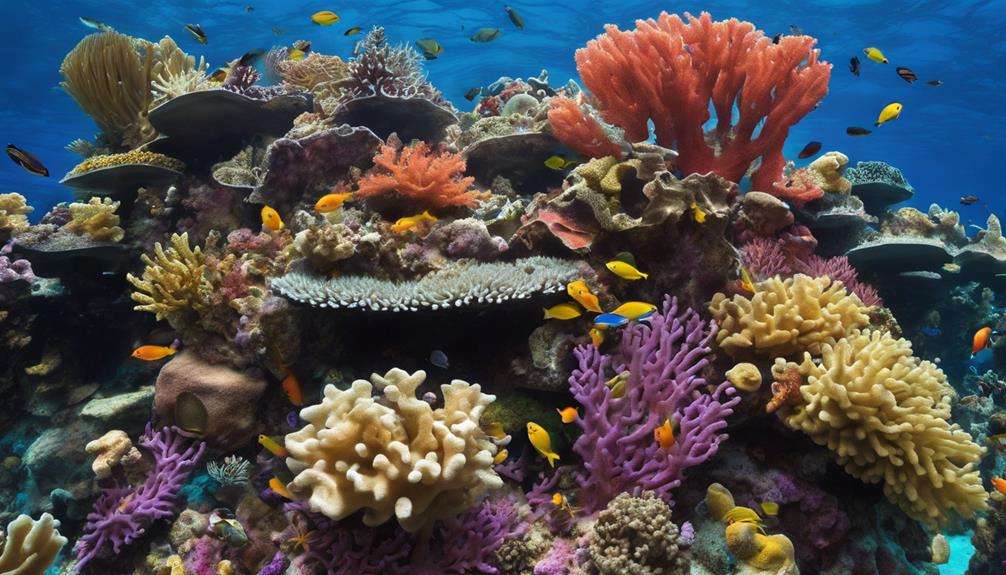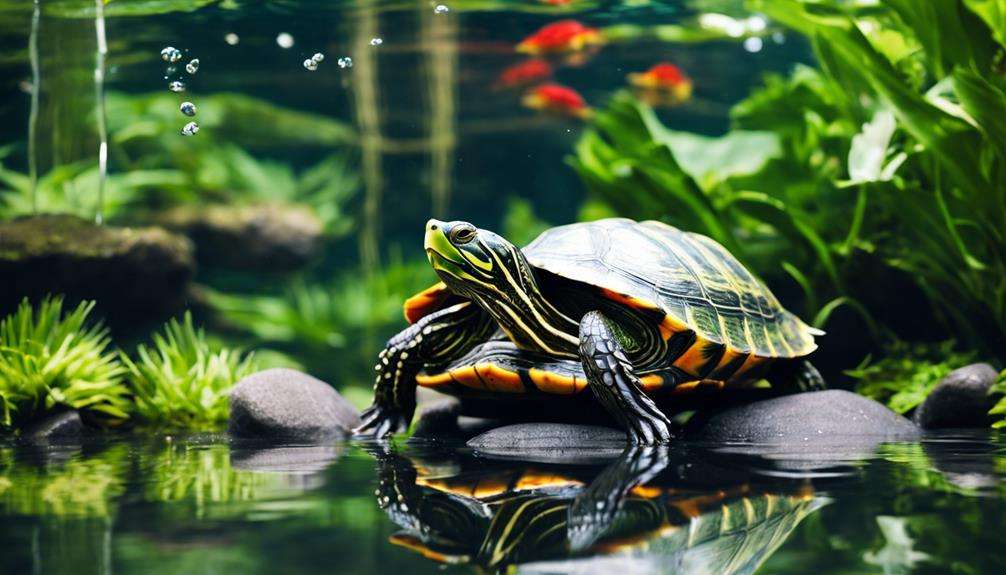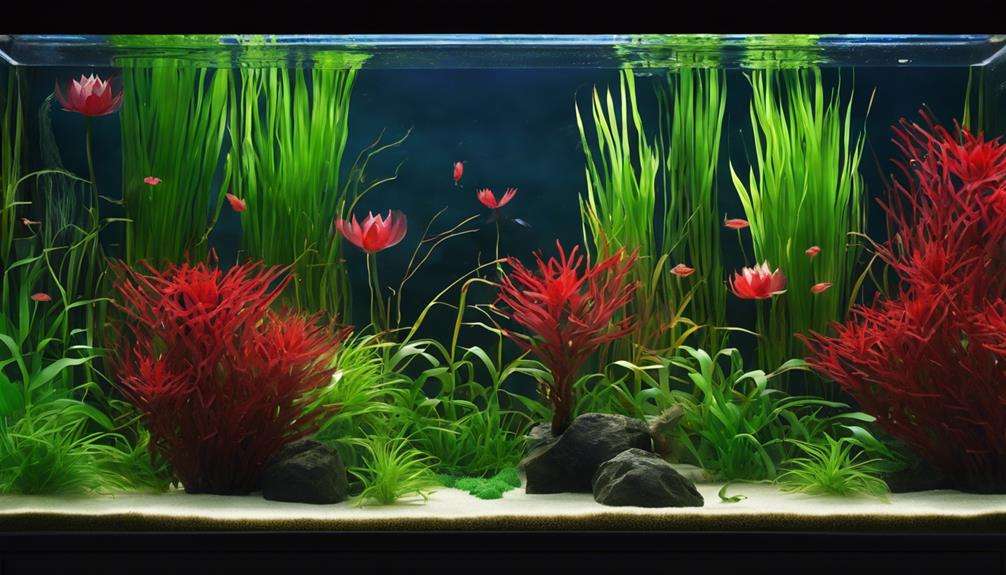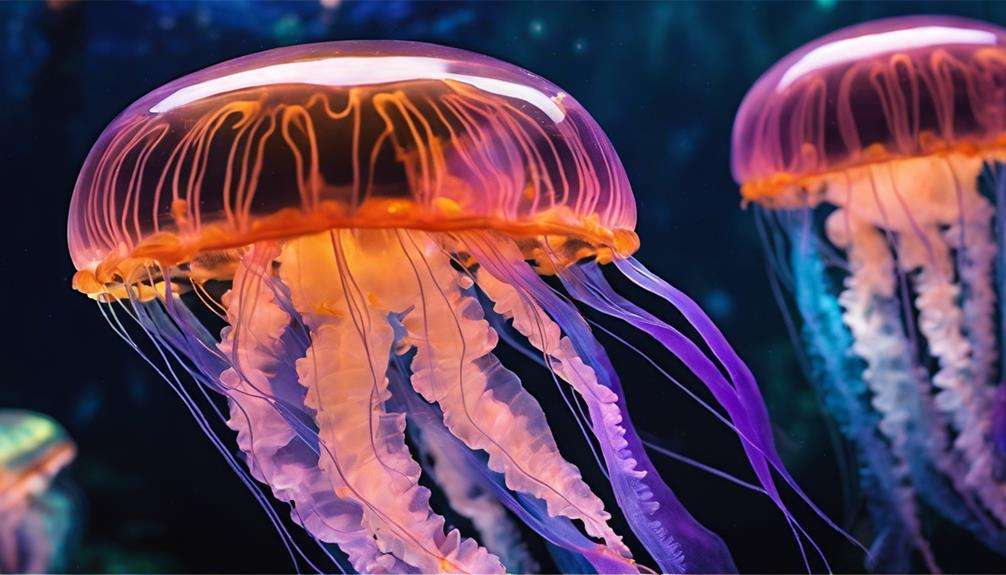If you're intrigued by the idea of adding a touch of uniqueness to your marine tank, nano reef tanks could be the perfect canvas for your vision. These compact setups lend themselves well to showcasing a variety of uncommon marine life, from mesmerizing fish species to intriguing invertebrates.
But what specific features make them stand out in the domain of tank diversity? Let's explore how nano reef tanks can cater to the needs of those seeking to house extraordinary creatures and create an extraordinary underwater ecosystem that captivates both the eye and the mind.
Key Takeaways
- Choose peaceful nano fish and exotic species for a diverse and captivating tank.
- Include unique marine invertebrates to enhance the ecosystem dynamics and visual appeal.
- Integrate rare corals for vibrant colors, shelter, and food sources in your nano reef tank.
- Follow setup tips like tank size, filtration, lighting, and live rock for a thriving environment.
Unique Nano Reef Tank Inhabitants
When selecting inhabitants for a nano reef tank, it's important to contemplate unique marine species that can thrive in a confined environment while adding visual interest and ecological diversity. One key consideration is choosing peaceful nano fish that can coexist harmoniously with other tank mates. Peaceful fish such as the Hi-Fin Red Banded Goby or the Tailspot Blenny are excellent choices for nano reef tanks. These species not only bring vibrant colors and interesting behaviors to the tank but also tend to be less aggressive, reducing the likelihood of conflicts with other inhabitants.
Additionally, providing adequate hiding spots within the tank is essential for the well-being of nano fish. Species like the Tanakas Pygmy Wrasse or the Pink Streaked Wrasse appreciate having places to retreat to when feeling stressed or threatened. Incorporating rock formations, coral crevices, or artificial caves can create safe spaces for these fish to hide and feel secure in their environment, promoting their overall health and reducing stress levels. By considering the needs of nano fish for peace and hiding spots, you can create a balanced and thriving ecosystem within your nano reef tank.
Exotic Nano Fish Species
Exploring the domain of exotic nano fish species opens up a world of vibrant colors, unique behaviors, and fascinating characteristics that can elevate the visual appeal and dynamic interactions within your nano reef tank.
The Pink Streaked Wrasse, initially shy but growing confident over time, transforms into a peaceful and colorful swimmer, bringing a sense of tranquility to your tank.
The Tailspot Blenny, with the ability to change eye color when threatened, adds an element of intrigue to the Western Pacific native's presence in your nano setup.
Additionally, the Hi-Fin Red Banded Goby forms a symbiotic relationship with Pistol shrimp, creating a dynamic and cooperative duo that enhances the diversity within your aquarium.
Each of these species, including the Blue Spotted Puffer with its striking blue spots on an orange body and the Tanakas Pygmy Wrasse named after Hiroyuki Tanaka for its red body with white stripes, contributes uniquely to the beauty and charm of your nano reef tank.
Unusual Marine Invertebrates for Nano Tanks
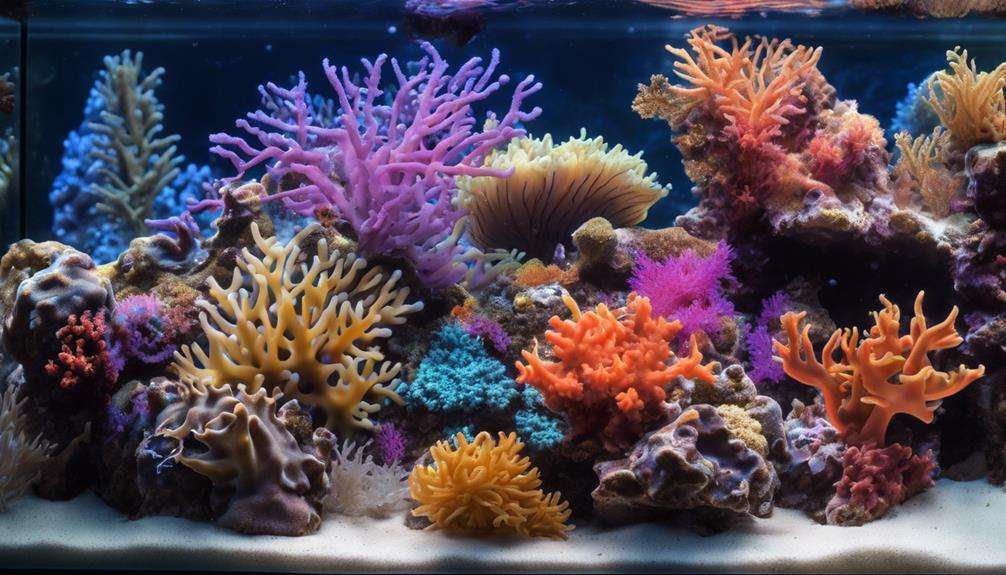
In nano reef tanks, the inclusion of unusual marine invertebrates such as pom pom crabs, sexy shrimp, and porcelain anemone crabs can greatly enhance the diversity and dynamics of the underwater ecosystem. Pom pom crabs exhibit vibrant colors and carry anemones in their claws, requiring a well-established tank with live rock to thrive. These crabs contribute both color and activity to the tank environment.
Sexy shrimp, known for their small size and social behavior, are excellent additions that add movement and interaction within the tank, especially when kept in groups. Porcelain anemone crabs, as filter feeders, are peaceful tank inhabitants often found near anemones for protection and a food source. Their presence can provide a unique visual appeal while contributing to the overall balance of the tank.
Nano tanks offer a suitable environment for these unusual marine invertebrates to flourish, showcasing their fascinating behaviors and enhancing the overall appeal of the tank.
Rare Corals for Nano Reef Tanks
To expand the diversity and visual allure of your nano reef tank, consider incorporating rare corals such as the Purple/pink Clove Polyp, Green Elephant Ear Mushroom, and Green Polyp Toadstool.
The Purple/pink Clove Polyp, available at JC Aquaria for $30.00, showcases vibrant hues that can add a pop of color to your tank.
The Green Elephant Ear Mushroom, obtainable at JC Aquaria for $170.00, boasts a unique appearance resembling an elephant ear, making it a mesmerizing addition to your coral collection.
If you're looking for a more affordable option, the Green Polyp Toadstool, offered at RustyShackleford for $59.00, presents a captivating green coloration that can complement other corals in your tank.
These rare corals not only enhance the visual appeal of your nano reef tank but also contribute to the overall ecosystem by providing shelter and food sources for your marine life.
Nano Reef Tank Setup Tips
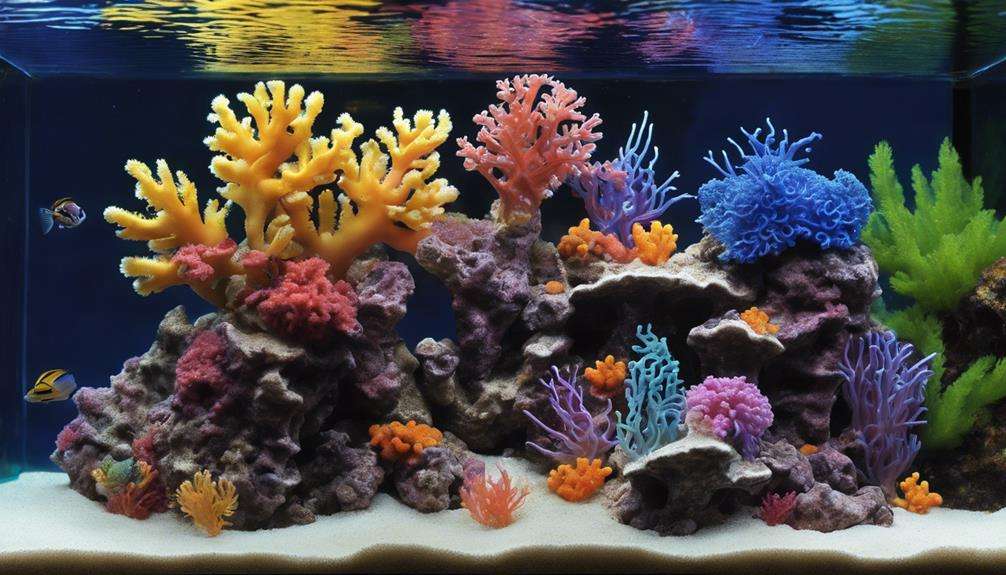
For best success in setting up your nano reef tank, select a tank size of at least 10 gallons to provide ample space for your unusual marine life. A larger tank offers more stability in water parameters and allows for a more diverse selection of species.
When setting up your nano reef, incorporate live rock and sand to establish a natural environment that promotes biological filtration and provides hiding spots for your marine inhabitants. Proper lighting is essential for the photosynthetic organisms in your tank, while a quality filtration system and adequate water flow help maintain water quality and oxygen levels.
Before adding any uncommon marine species, research their specific care requirements to make they thrive in your nano reef environment. Regular water testing and maintenance routines are essential to monitor and adjust parameters for the health and stability of your nano reef ecosystem hosting unusual marine life.
Frequently Asked Questions
What Is the Most Peaceful Fish in the Nano Reef?
For the most peaceful fish in a nano reef, consider the Flame Cardinalfish. Its non-aggressive nature, vibrant red coloration, and disease resistance make it an ideal choice. It can coexist well with various tank mates, ensuring harmony in your aquarium.
What Is the Best Nano Saltwater Tank for Beginners?
For beginners, the Coralife BioCube 16 is ideal. It offers coral compatibility with LED lighting and integrated filtration. Enjoy a hassle-free setup and vibrant marine life in this 16-gallon tank.
What Marine Fish Can Go in a Nano Tank?
In a nano tank, consider Clownfish compatibility, invertebrate options, and stocking restrictions. Choose species like Snowflake Clownfish for symbiotic relationships with anemones. Opt for Pistol shrimp for unique partnerships. Be mindful of space limitations.
What Is the Rarest Fish for Reef Tank?
The rarest fish for a reef tank is the Clarion Angelfish. With vibrant colors and unique patterns, these fish are highly sought after. Conservation efforts protect their populations due to limited distribution and specific habitat needs.
Conclusion
Captivating, nano reef tanks are an excellent choice for showcasing unusual marine life due to their compact size and visually appealing environment.
Did you know that approximately 80% of marine fish species are suitable for nano tanks, making them a versatile option for creating a diverse underwater ecosystem?
By carefully selecting unique inhabitants and providing proper care, you can create a captivating and vibrant nano reef tank that will be a stunning focal point in any space.
